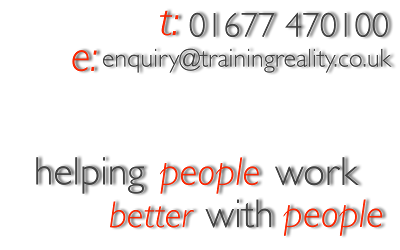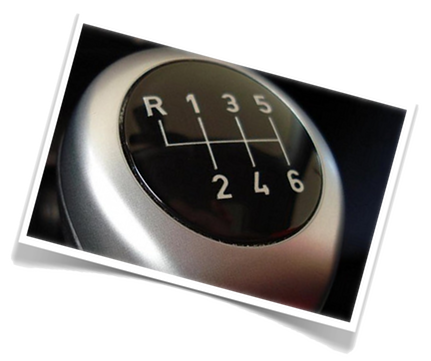Please press (at least!) one of these.
It costs you nothing, and (possibly) helps us spread the word!
Use more than one gear
Wednesday, 17 March 2010
Management training. Experiential challenges. Machismo. Have I put you off yet? If you simply want a high adrenalin, fun day out, perhaps not. But if you really, genuinely want to learn, I hope I have.
One of the real gaps in a lot of management and leadership training is an acknowledgement that it is not always about setting a direction, picking the highest gear, and putting your foot down. When people talk about drive or energy or commitment, all of which can be wonderful things, they often miss out on the beauty, the refinement of a more subtle approach.
Why does your car have more than one gear? And why does it have a reverse? The answer is rather obvious – there are times when low gears (starting off, pulling something behind you, heading up a steep hill) are useful; times when high gears area the better ones to choose (once you reach cruising speed, to maximise economy); and there are times when reverse is simply essential – anyone who remembers the (Isetta/BMW?) bubble car with the front-opening door and no reverse gear can attest to this!
So why is so much time devoted to, and admiration showered upon, people who seem to operate in only a single gear? A few possible reasons for this are:
It’s simple
Speed, getting things done, cracking on. All wonderful things. But they do need to be used with a degree of care in the real world, because, thank goodness, we live in an environment that is much more delicately flavoured than that – an environment in which the smallest shifts can make the biggest differences, and where the actions of one are interconnected with the actions of others.
There are times however, where it can be easy to succumb to the temptation to just crack on – let’s stop thinking and start doing. Be aware that this is a temptation, and that it’s not always a good idea to give in to them.
It’s simplistic
A trait in management training that irritates me as much as, if not more than, any other, is the way in which some extremely valid concepts and ideas are over-simplified to enable people who don’t understand them fully to deliver them to others. All subtlety, all real insight is lost, but the trainer can quote pieces of research and (superficially) appear intelligent, insightful and intellectual.
As a couple of examples of this, take a look at my earlier article on the misrepresentation of Albert Mehrabian’s research into non-verbal communication here, and an article by Reg Connolly of Pegasus NLP on the trivialisation of NLP with regard to eye movements and “lie detectors” (see here)
It’s easier
A “trend” in training and development work is the idea of modelling – observing and taking note of the behaviours of people operating successfully in a particular field and modelling how they achieve that success, the idea being to replicate it.
This is a smart thing to do, but, as with a lot of smart things, can be over-simplified until it becomes meaningless. If, during the modelling process we filter out all the subtlety, we’re left with an easy-to-understand but pointless and unhelpful “solution”.
For further insight into the perils of “bad modelling”, see here.
…but it’s rubbish
Next time someone is talking to you about this single-minded focus, this relentless drive, don’t completely disregard everything that they are saying to you – there are loads of benefits in this approach. But do balance it with a mental image of a bull in a china shop…
In all but very simple, very short-term situations, we do need to use the full range of gears that we have available to us, and those who are capable of that level of flexibility and responsiveness will be the ones who survive to tell the tale – even if the tale isn’t in the style of a simplistic children’s fairy story.
Please press (at least!) one of these.
It costs you nothing, and (possibly) helps us spread the word!





